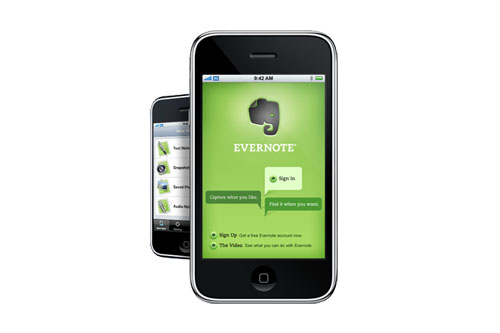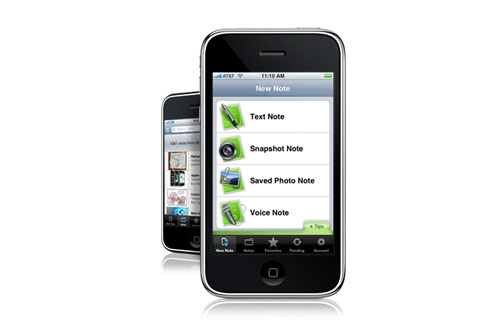
Photo Courtsey of Evernote Corp
After a thorough exploration of Apple’s controversial new darling, the iPad, I started imagining a list of applications that would be a perfect fit for the device. At the head of the pack was Evernote, my go-to application for securely storing important thoughts, documents and web pages. Evernote is a freemium (free with a paid option) service that bridges the online/offline divide; the offline services let you create and save notes, while the online features sync your notes and changes back to Evernote. And unlike other note applications, your files can include text, images, audio, web page clippings and even PDF files. A premium account, which runs just $44 a year, allows you to sync and remotely store files, eliminating the need to email yourself works-in-progress.
Evernote harnesses the Internet’s powers for more than just syncing data; it also indexes your documents by turning the embedded text of photographs and handwriting into searchable content, a great design feature that allows others to find your notes. Befitting its Web 2.0 roots, each Evernote note or notebook can be publicly shared or made private, viewable only to those Evernote users you specify. Collaborators on a free account notebook receive an email invitation and a link that allows read-only access, while premium users can set their shared notes to receive edits and updated information for a Wiki-like collaborative work experience.
Evernote is easy to use and completely customizable. Notes can be directly typed into the program, inserted via copy and paste, or imported through browser plug-ins for Safari and Firefox. These browser extensions allow you to save entire webpages with images and HTML formatting intact, making it a great way to read content from paid-subscription sites. With so many ways of creating content it’d be easy to get overwhelmed by hundreds of notes, so Evernote helps you sort through everything with robust search tools, tagging support, and various options for viewing notes.

Photo Courtsey of Evernote Corp
With apps for the iPhone, Android, Windows Mobile, Blackberry, Symbian and now Maemo, Evernote goes beyond website and desktop syncing by letting you access all your favorite website logins, magazine articles, recipes, documents, and invoices wherever you go. Compared to the other mobile clients, the Evernote iPhone app has the most features (most likely because Evernote was first ported to that phone). The app lets you view notes by location, create voice notes (but not transcribe them), even allows you to back up your information for offline storage, a feature which comes in handy when you lose a 3G or WiFi signal. Even though the iPhone app has a head start, other mobile client programs are steadily improving and should soon reach parity with Apple’s devices.
Evernote is perfect for anyone who needs to both archive and retrieve information from various locations and devices. As mobile hardware and broadband servers increase their capabilities, look for Evernote to expand their services to include video notation and video indexing. When that day comes, it will be possible to create a rich media archive of your life.
Previous Post: Les Queue de Sardines Presents Tights With A Visual Twist
Next Post: Venturing into Spencer Krug’s Dreamland
Tags: TechnologyNo Comments




 ShareThis
ShareThis















0 responses so far ↓
There are no comments yet...Kick things off by filling out the form below.